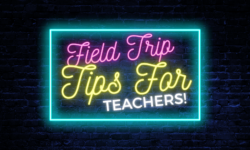A presidential inauguration is a national event that few people ever see in person, beyond the television set. If you have the opportunity to take a group of students to that most significant of days, please do. It's a wildly educational event where students will be able to see up close how the government is supposed to work, how presidents get elected, and the oaths they have to take to accept the seat of the presidency. Our democratic republic made world history over two centuries ago by doing this exact thing, so take an inauguration trip and witness history in the making in 2017!
Washington, D.C.
The capital is, of course, the premiere destination for anything related to the presidency and politics. The inauguration will take place here, on the western front of the U.S. Capitol Building on Friday, January 20. Thousands of people will gather below on the sloping lawn to watch and hear the President take his/her oath from the Chief Justice of the Supreme Court and be sworn into office. This is a momentous occasion that millions will watch on TV but few see in person.
The Presidential Inauguration Address may only last a few moments but the President experiences a full day of activity starting with a morning worship service, a tradition in place since 1933. After that, the President-elect is taken to the Capitol Building, the Vice President is sworn into office in the Senate chamber, and then the President-elect comes out onto the western front of the Capitol to take his/her oath. When all is said and done, there is an inaugural luncheon for the new President and Vice President, their families, and select guests and later a parade, a tradition in place since 1841.
The inauguration you see only lasts a few minutes so if you want a longer tour of D.C., here are some landmarks and museums you might like to see to add to your inauguration themed trip.
- White House - In all probability, the White House will be closed for tours on the day of the inauguration but no worries. If this is a longer trip, stop by before or after and see if you can tour the grand dame with all of her history and prestige. The tours are subject to change at a moment's notice based on the President's schedule.
- National Mall - You'll be down there, on the Capitol Hill end, for the inauguration but while you're waiting, check out the other monuments and memorials around its lovely green lawn. The Washington Monument strikes an intimidating yet familiar pose in the center, but follow the Reflecting Pool down to the Lincoln Memorial and say hello to the Emancipator. Here you can talk about presidents who effected a great change in the country, and also ones that didn't use their position to its fullest potential. The Jefferson Memorial, Vietnam Veterans Memorial, and Martin Luther King, Jr. Monument are also in attendance and highly recommended for all school groups.
- National Museum of American History - This incredible Smithsonian was built on the history of the United States, making it a wonderful stop on your presidential field trip. You can explore the full gamut of American history from colonial British occupation to the evolution of modern technology. See artifacts from George Washington and Thomas Jefferson, papers and possessions from campaigns, the women's suffrage movement, civil rights, and much more.
- Mount Vernon - George Washington's estate lies only 15 miles south of D.C. on the scenic shores of the Potomac. Our first president adored this plantation home and longed to be an innovative farmer. His estate is an excellent place for student groups to discover the life and legacy of the first President, how he viewed and approached the presidency, and how he lived beyond the office.
Philadelphia
The upcoming Presidential Inauguration will definitely be in Washington, D.C. but not all of them were. For a slightly different, yet still history-based trip, visit Philadelphia's Independence National Historical Park to see Congress Hall, the site of George Washington's second inauguration as well as John Adams'. Also, stop in Independence Hall and see where the Declaration of Independence was drafted and where the Constitution was signed into being.
New York City
Many people don't realize that the first U.S. capital was in New York City, or New Amsterdam as it used to be called. It was here that George Washington was sworn into office as the first President on April 30, 1789, on the steps of Federal Hall. The building was then used as the first capitol building of the United States until it was demolished in 1812. The "new" Federal Hall National Memorial was built in 1842 as the U.S. Customs House on the same site. Now operated by the National Park Service, the building is a national monument commemorating the original Federal Hall and its significant events. They welcome visitors daily to learn more about the presidency, the early days of the United States, and celebrate the anniversary of Washington's inauguration every April 30.
Local and State Government
A wonderful, and in all likelihood more practical, way to celebrate the Presidential Inauguration is to teach your students about state and local government. A part of what makes America great is the fact that the states have a level of autonomous control over their own territory and are not totally subjected to the power of the federal government. However, many people overlook the importance of state government and even more so on the local level. So for the Presidential Inauguration, learn about how the state government officials are elected, how they're sworn into office, and how they spend their time in the state capitol building. Tours of state capitol buildings are always free and are a popular option for elementary and middle school class trips, though high school students may also find interest in the exhibits and goings-on, perhaps even considering future careers in politics.






